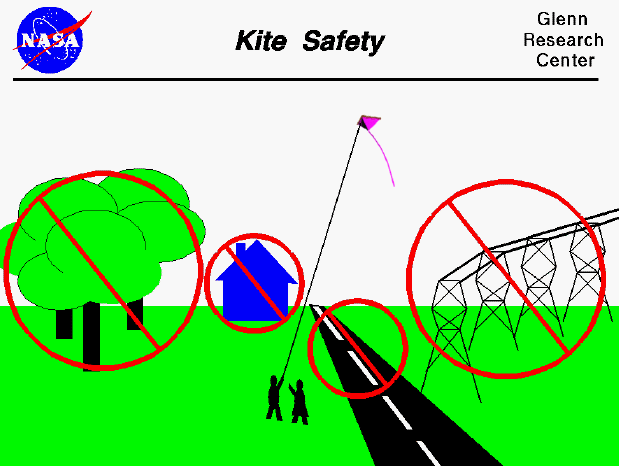

An excellent way for students to gain a feel for aerodynamic forces is to fly a kite. Kites come in a wide variety of shapes and sizes, and each kite flies a little differently from another kite. Kite flying is an excellent way to learn while you are having fun, but kite flying can also be dangerous.
At NASA, we take safety very seriously in everything that we do. Safety is the first mission in flying; whether it is flying the Space Shuttle, an experimental aircraft, or a kite. You must always be aware of the people and things around you which can be harmed by your aircraft, or which can harm you or your aircraft.
Fly your kite in an open field or near the shore where there are no obstacles. Never fly near trees. As Charlie Brown observed, they like to eat kites. If your kite ends up in a tree, you're going to need a new kite. Never fly near a highway. You can be hurt chasing your kite across the highway and people driving by are often distracted by kite flyers. If your kite gets hit by a car, you're going to need a new kite. Never fly near houses. Your kite can do damage to the windows, sidings and roof of a house. If your kite ends up on the roof, you're going to need a new kite. And never, ever fly near high tension wires. If your kite touches the lines you can be killed by the electricity. Your parents and friends can't get a new you.
Go to...
byTom
Benson
Please send suggestions/corrections to: benson@grc.nasa.gov